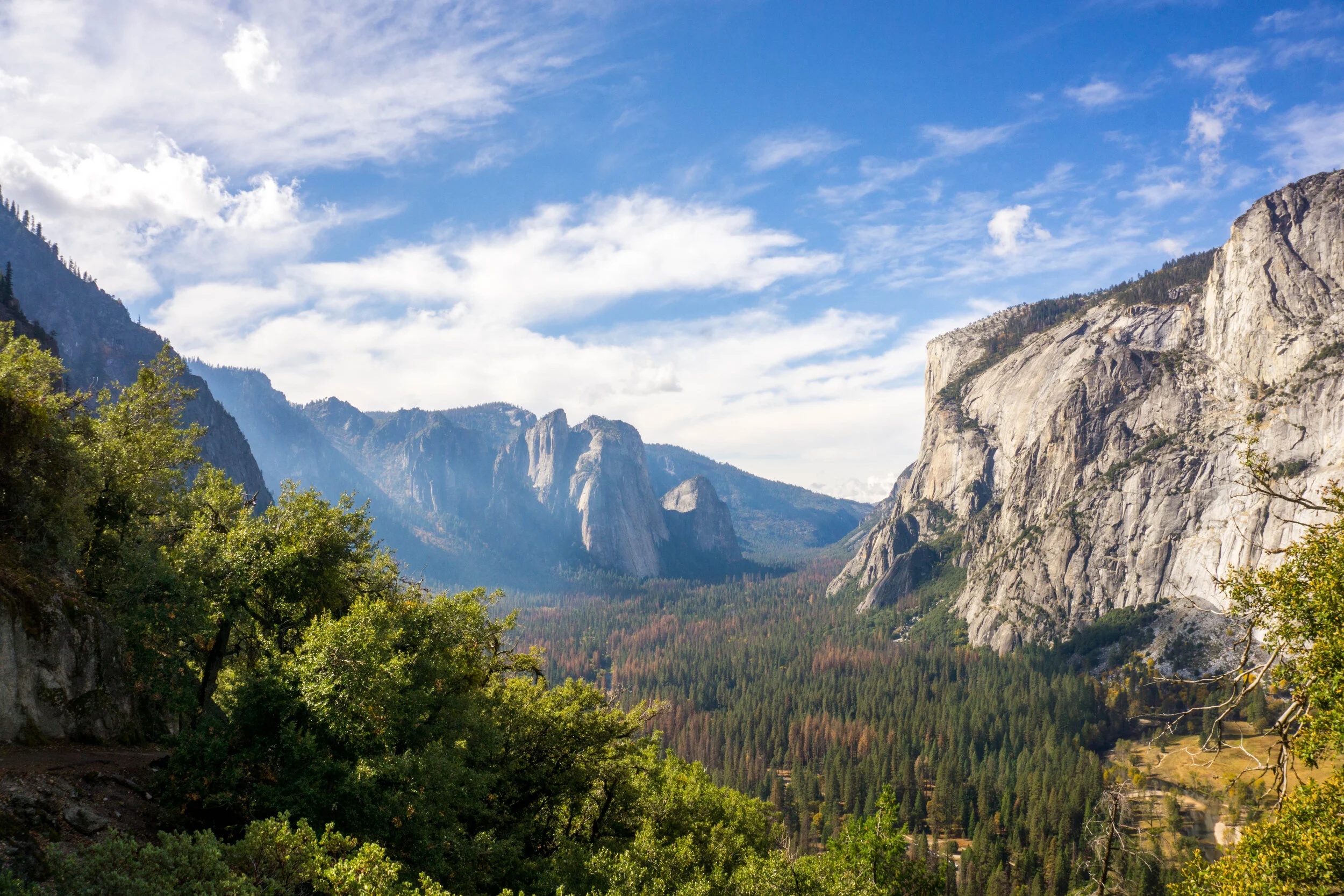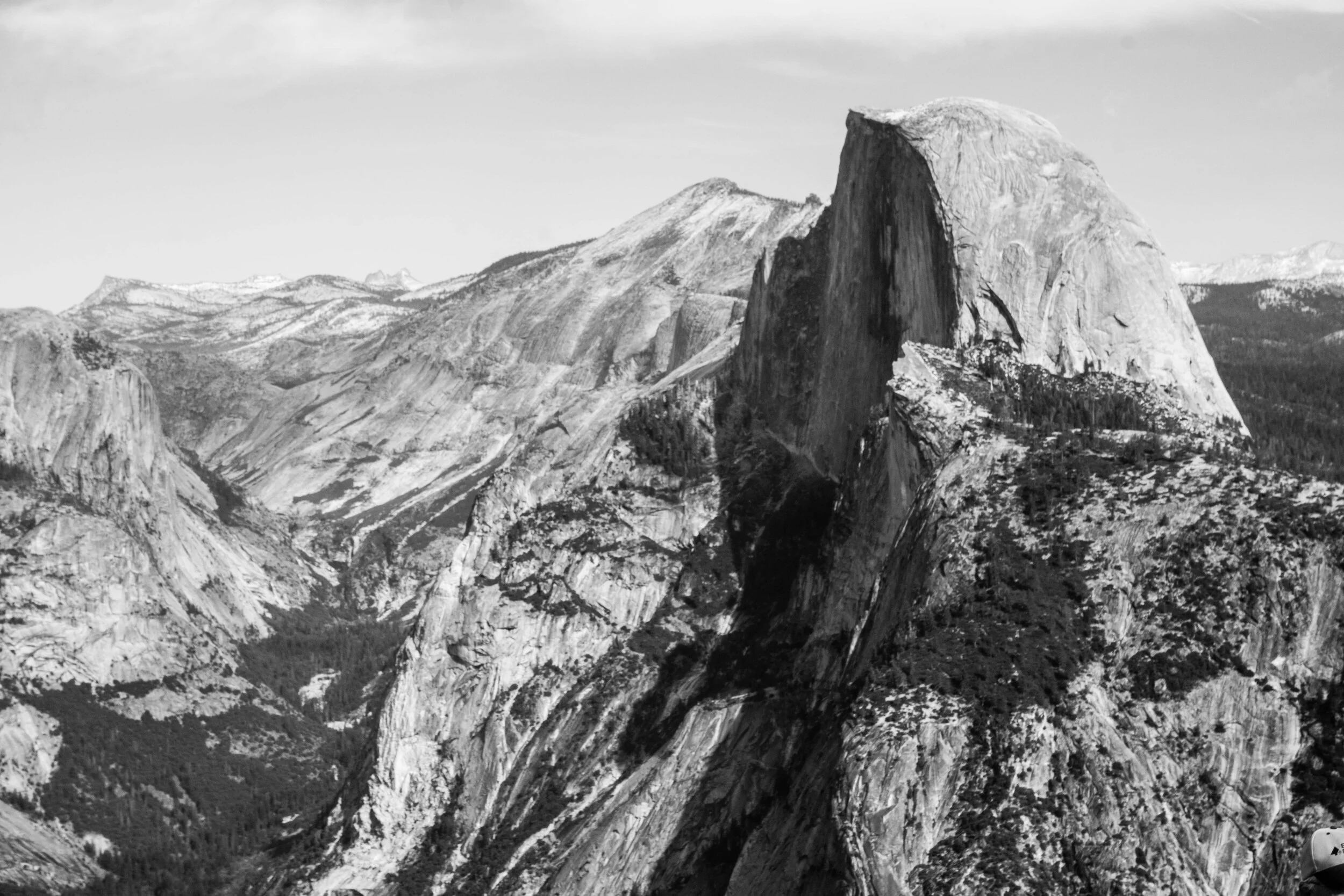A Fiery Force: How Volcanoes Formed Many of the Landscapes We Know Today
Case Study: Yosemite
People travel from all over the world to witness the impressive granite walls and peaks in Yosemite, explore the beaches and waterfalls of the Hawaiian Islands, and to experience the explosion of steam from the geysers in Yellowstone. And while those places appear to have vastly different landscapes, they all have a commonality—at some point they were all (or still are) part of active volcanic systems.
So how do volcanoes form?
There are three layers of the Earth—the core, the mantle and the crust. The crust, the outermost part that we stand on, is broken up into tectonic plates that are constantly moving either under, on top of or against each other. For anyone who has felt an earthquake before, you can attest to the movement of the Earth’s crust. Volcanoes are openings in the crust that erupt when magma, melted rock, arises from the mantle.
(By the way, magma is the same as lava—but magma refers to molten rock stored below the surface of the Earth and lava is the term for when it erupts from volcanic vents on the planet’s surface.)
There are three processes that form volcanoes: When tectonic plates collide and one slides under the other, when tectonic plates diverge and magma arises through the gap from below, and in hot spots—areas where the inside of the Earth is unusually hot.
This explanation will only be about the what happens when tectonic plates collide and examples of how this formed many of the mountain ranges and islands we see today, including the famous peaks in Yosemite.
How did the Sierra Nevada mountain range form?
The formation of a mountain range can happen when a dense oceanic plate slides under a lighter continental plate, penetrating into the Earth’s mantle. The water, as well as other trapped fluids and gases, in the oceanic plate percolates deep into the mantle, lowering the melting temperature of the surrounding solid rock and causing it to melt, forming magma. Since magma is hotter (and thus less dense) than the surrounding rock, it rises buoyantly to the surface of the Earth’s crust and spews out as lava. This is how we got the entire Sierra Nevada mountain range in California. An oceanic plate subducted under the North American Continental plate causing magma from below the Earth’s surface to arise and pool in large pockets on the Earth’s crust. These pockets eventually cooled and merged, forming a massive body of granite much the length of California, about 400 miles long. Over millions of years, tectonic movement uplifted the entire block of granite thousands of feet high and created the impressive peaks we see today.
Have you ever wondered where all the 17,000 islands in Indonesia come from?
Unlike the formation of the Sierra Nevadas due to an oceanic plate sliding under a continental plate, Indonesia formed from one oceanic plate sliding under another oceanic plate. I used to wonder how islands just appear out of the deep blue…but with enough magma constantly being released into the ocean, over time islands form—islands that often are still very active volcanoes (like Mt. Agung in Bali).
But what about that massive mountain range in Asia—the great Himalayas that have climbers planning world-class adventures to summit extraordinary peaks?
If you’re catching onto the pattern and thinking ‘moving tectonic plates’, you’re right. Unlike when a dense oceanic plate hits another plate and dips below into the Earth, when two continental plates collide, they have nowhere to go but up. So, what happens when the Indian plate and Eurasian plate slam into each other in Asia? Mountains that stretch to the sky. And since those plates are still colliding, the mountains are actually getting taller with every earthquake. If you climbed Mount Everest this year, you technically climbed higher than the first man who climbed it (the Himalayas rise by about 1 cm per year). Ha.
Since there is no plate subduction occurring, the mantle isn’t melting and sending a stream of magma upward—therefore, these mountains are not volcanoes. No worries, climbers who want to scale Everest, you still face death from hypothermia, altitude sickness, and falling off a cliff—but not from a volcanic eruption.
YOSEMITE
Now…if you can understand that little bit about how some volcanoes form, let’s talk about one of my favorite places on Earth: Yosemite.
Yosemite has long been known as a climber’s paradise. The perfectly sculpted granite walls and breathtaking views of a valley lined with rocky, tree-covered peaks is the glorious result of millions of years of tectonic movement, volcanic action, and glacial erosion. Reaching thousands of feet above the valley floor, the famous walls of El Capitan and Half Dome actually used to be molten rock—the heart of very active volcanoes. What happened?
Hundreds of millions of years ago, there was an ancient oceanic plate, the Farallon plate, that was pushed beneath the North American continental plate. And as we saw, where an oceanic plate slides below, up magma goes. The first, original Sierra Nevada mountain range formed as a series of volcanoes. Strangely enough, this ancient oceanic plate that was being subducted got entirely consumed beneath the North American plate and disappeared. With its departure, the North American plate was now brushing up against a new oceanic plate (the Pacific Plate) which was sliding northward, parallel to the California coast, instead of under it. Since no more magma was being forced to the surface in the Sierras, those volcanoes all became extinct. The once active beasts became nothing more than massive peaks of rock and dirt—a volcanic graveyard.
Half Dome and El Capitan are the remains of what geologists call ‘magma chambers.’ Inside every volcano, deep below the surface, is a magma chamber. In an active volcano, this is a very large pool of molten rock, ready to rise to the surface. But when the volcano dies and no more magma is being ushered up from the mantle, this magma chamber becomes stagnant and cools. Over a long period of cooling, the magma crystallizes into granite or similar igneous rocks. (Your granite countertops are actually cooled magma…fun fact.)
Over millions of years, magma chambers cooled and hardened beneath the volcanoes of the ancient, original Sierra Nevada mountain range which was comprised of hardened layers of lava and ash. Over time the volcanoes themselves were mostly eroded away by the environmental forces like wind, rain and ice. Starting around 10 million years ago, faults began lifting the previously buried, now hardened magma chambers thousands of feet high, forming the modern Sierra Nevada mountains. Followed by more years of weathering, sheets of rock falling off, and erosion from moving glaciers in Yosemite Valley, the granite became sculpted into the mountains and walls we see today. It is still debated whether or not Half Dome was ever a full dome, but it definitely was bigger than it is today.
These exposed slabs of granite are a prehistoric reminder of the existence of volcanoes that once dominated the landscape, but turned cold and were etched away by millions of years of natural forces.
Credit: To my friend and incredibly intelligent geologist, Kaelynn Rose who has a master’s degree in geophysics, for spending our five-hour hike (and more) explaining this fascinating world of volcanoes to me. She is truly one of the most knowledgeable people I know and I must attribute almost all the information transcribed in this post to her. Some advice for everyone…go become friends with a geologist and take a hike with him/her. You will learn a lot.
Other sources:
https://pubs.usgs.gov/gip/dynamic/himalaya.html
http://www.geo.cornell.edu/hawaii/220/PRI/PRI_PT_hotspot.html
https://spaceplace.nasa.gov/volcanoes2/en/

